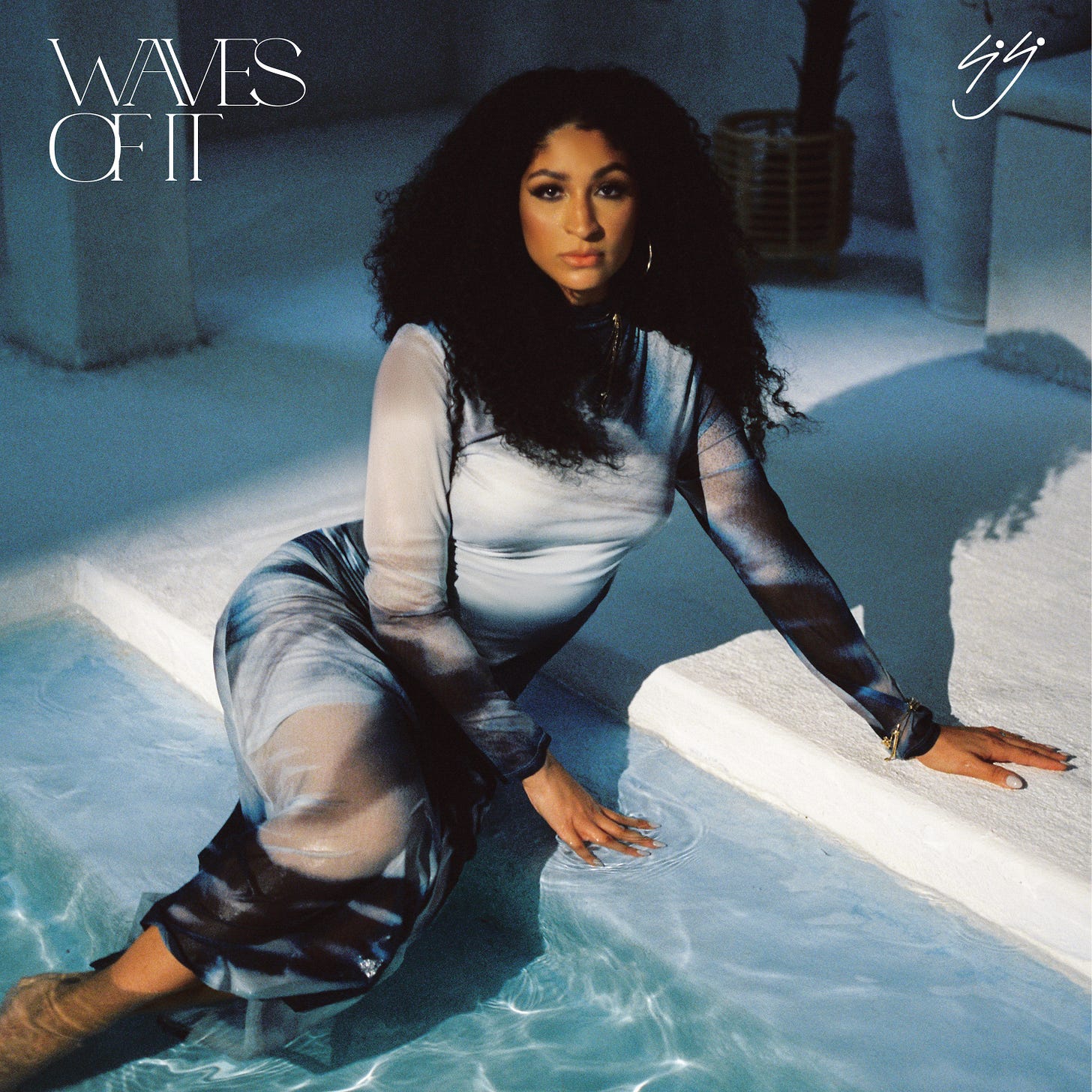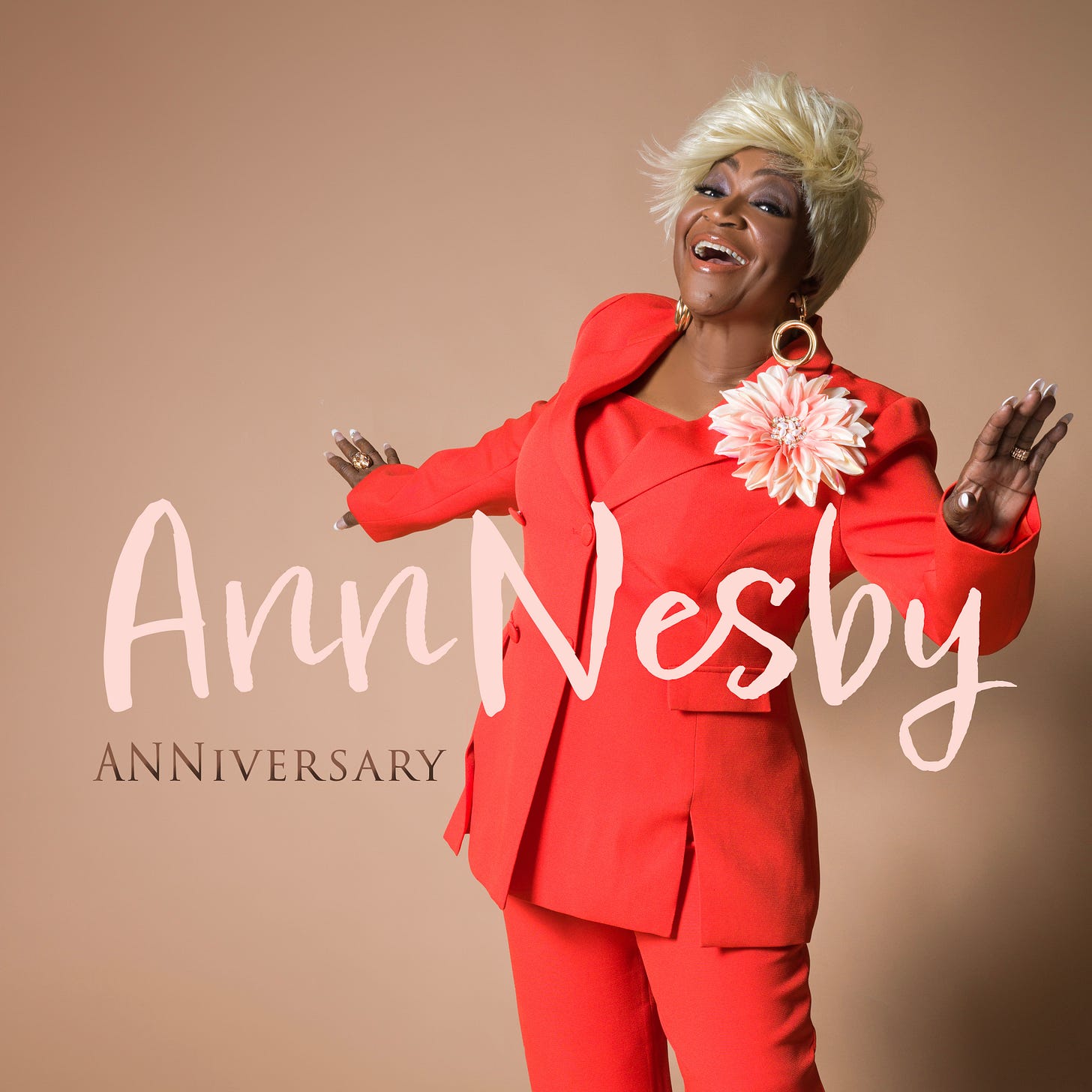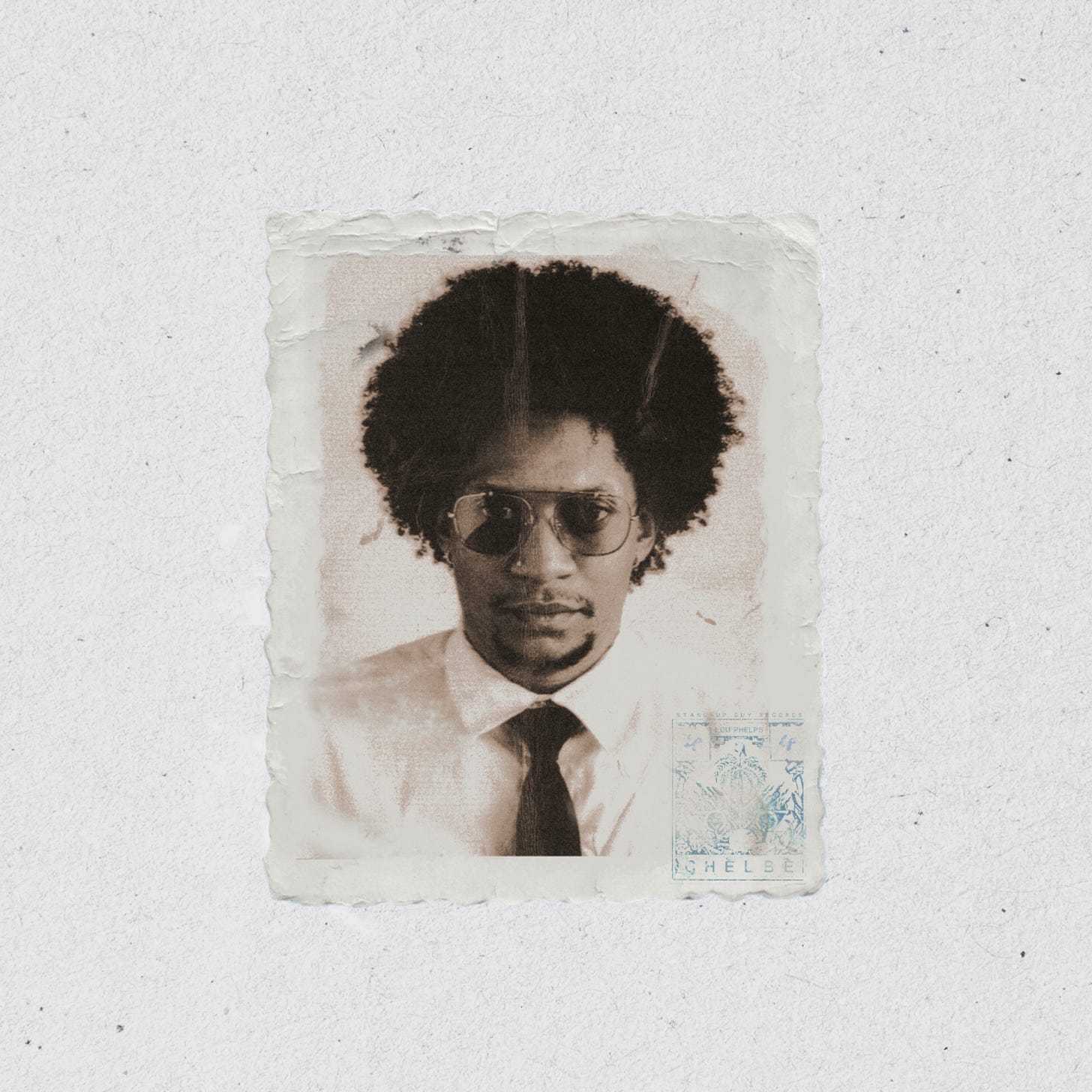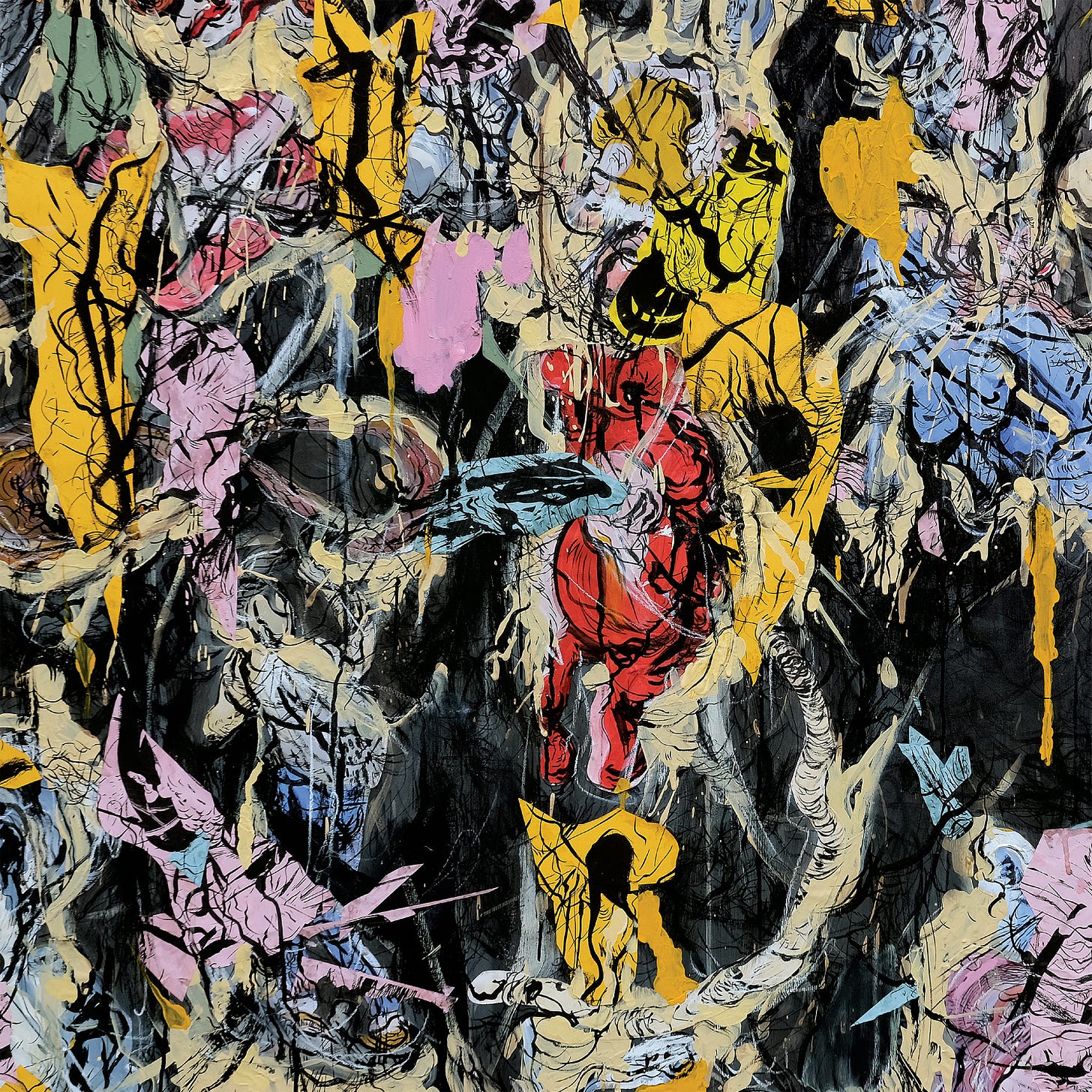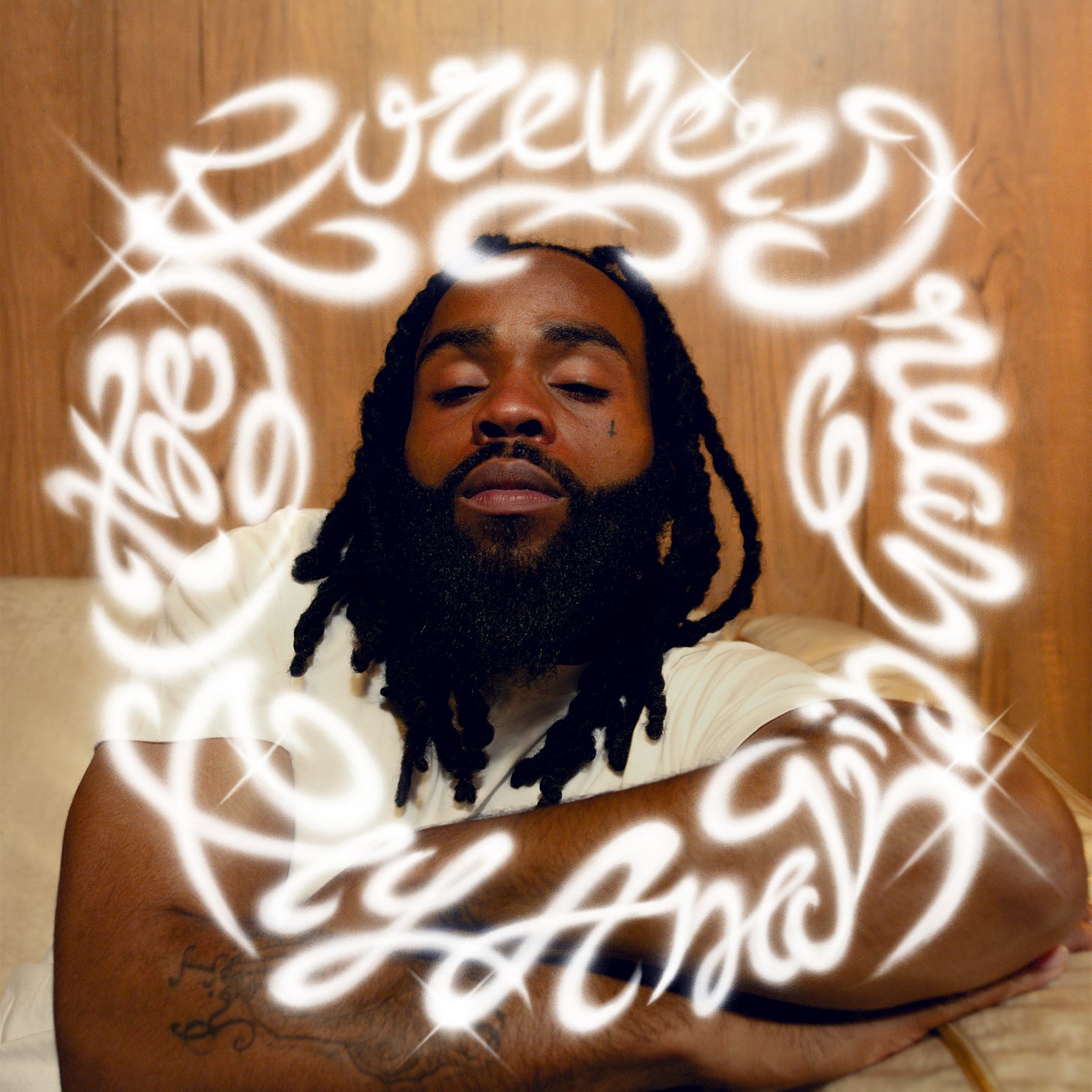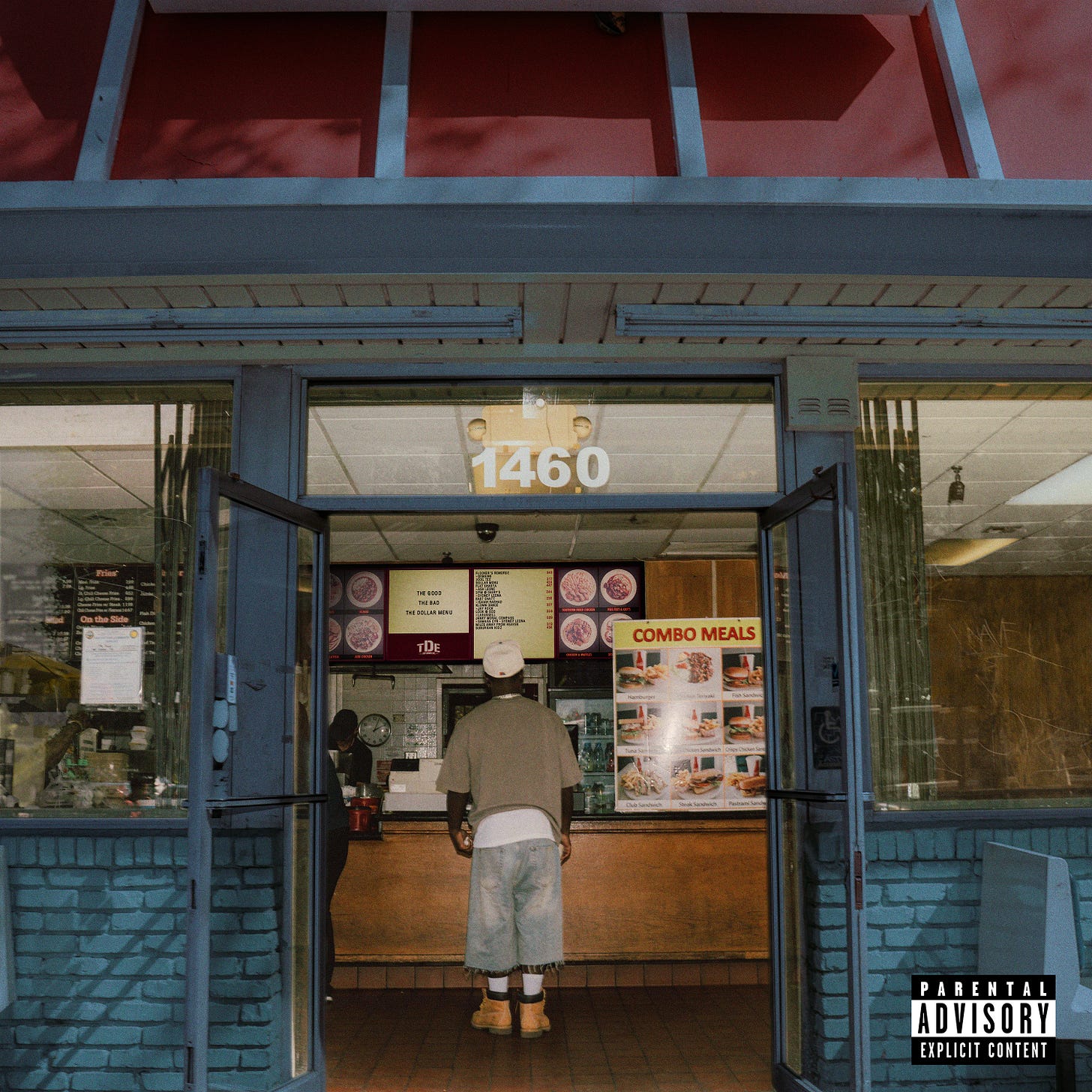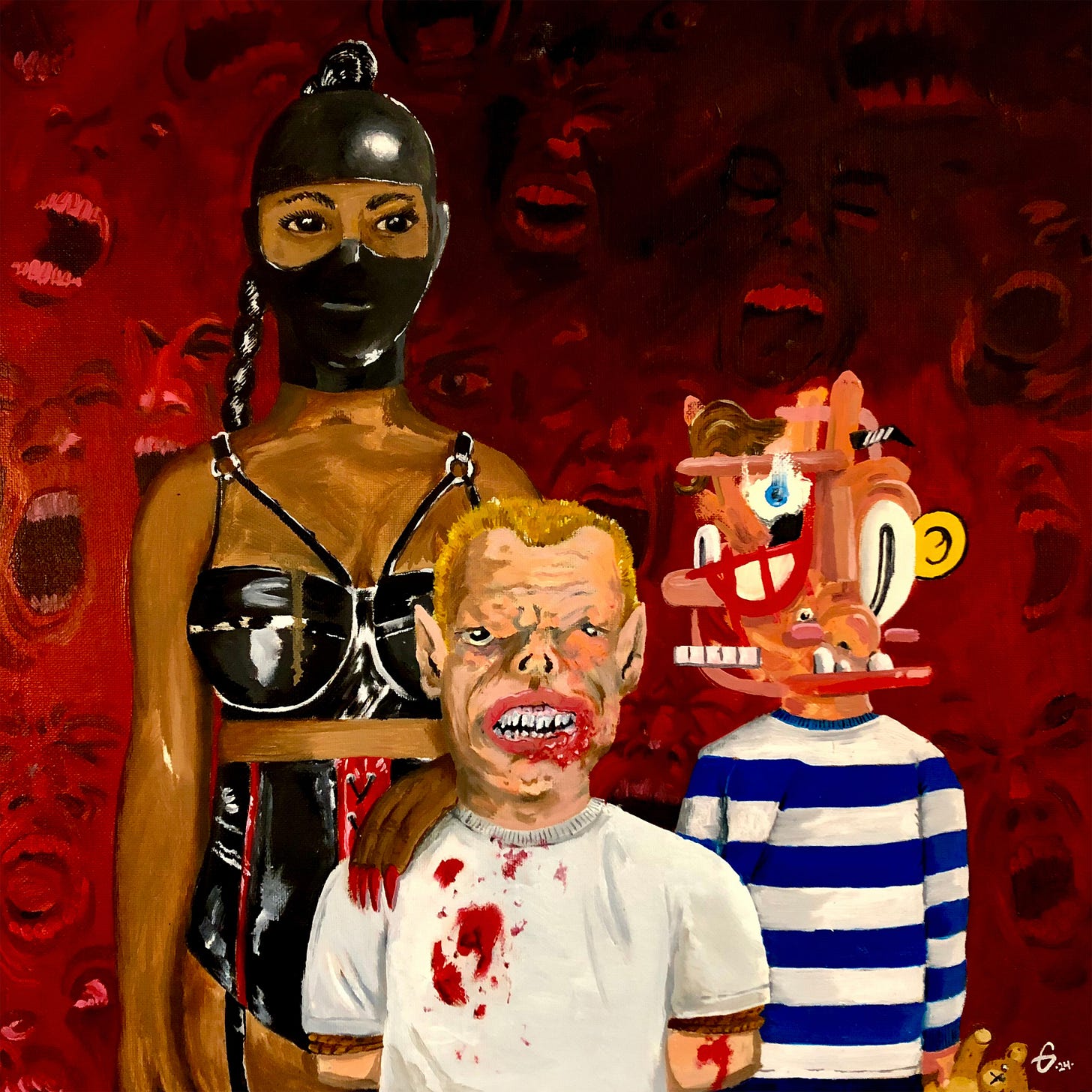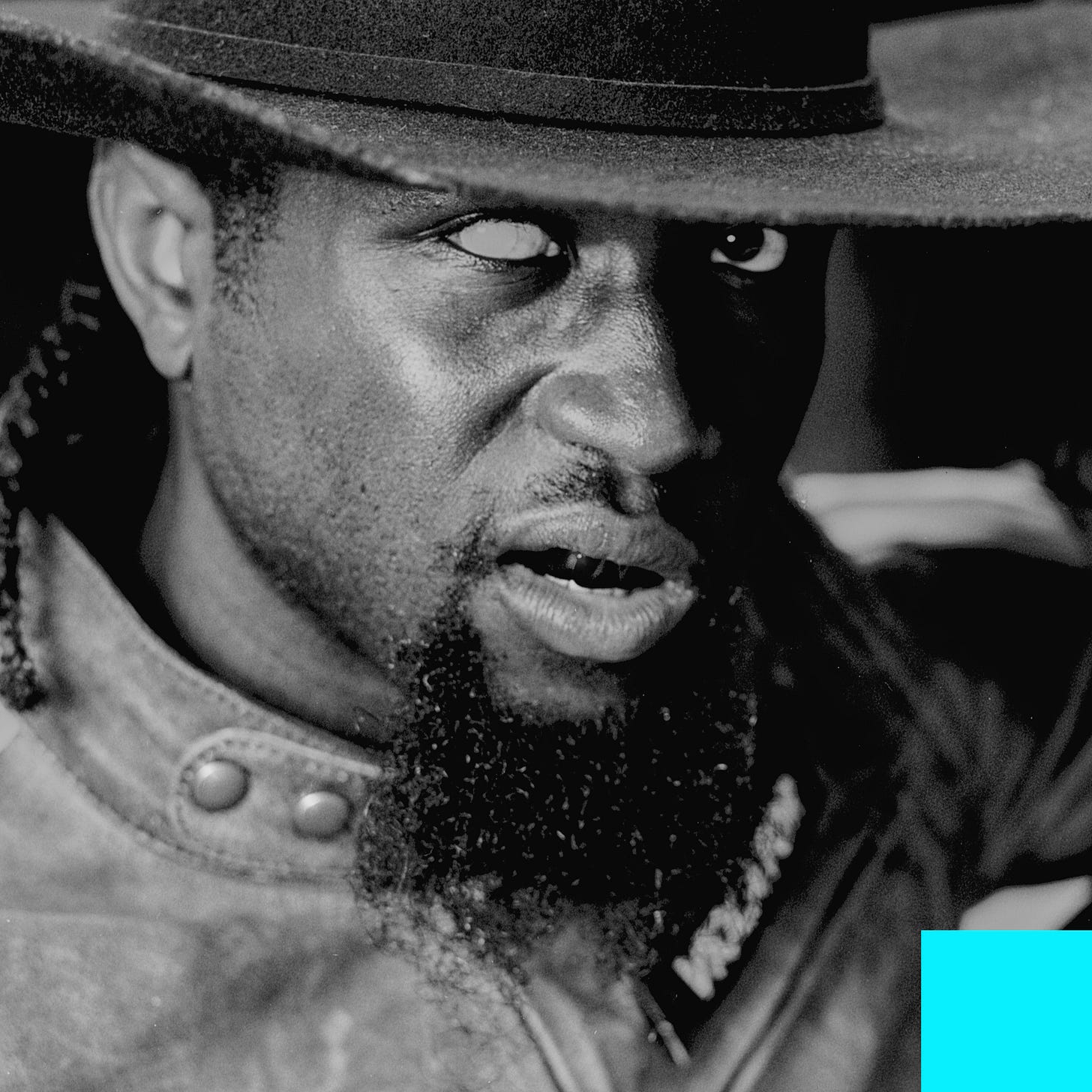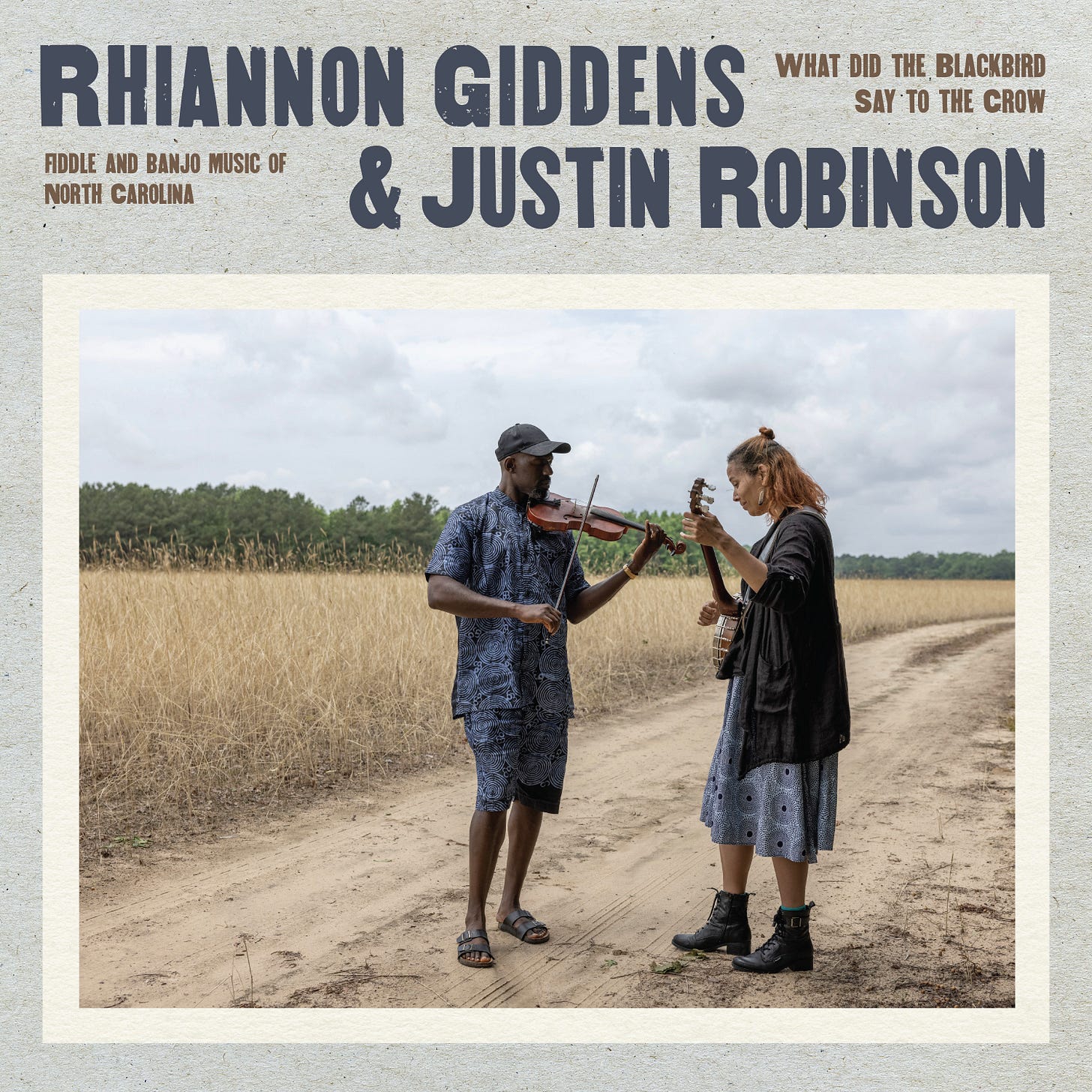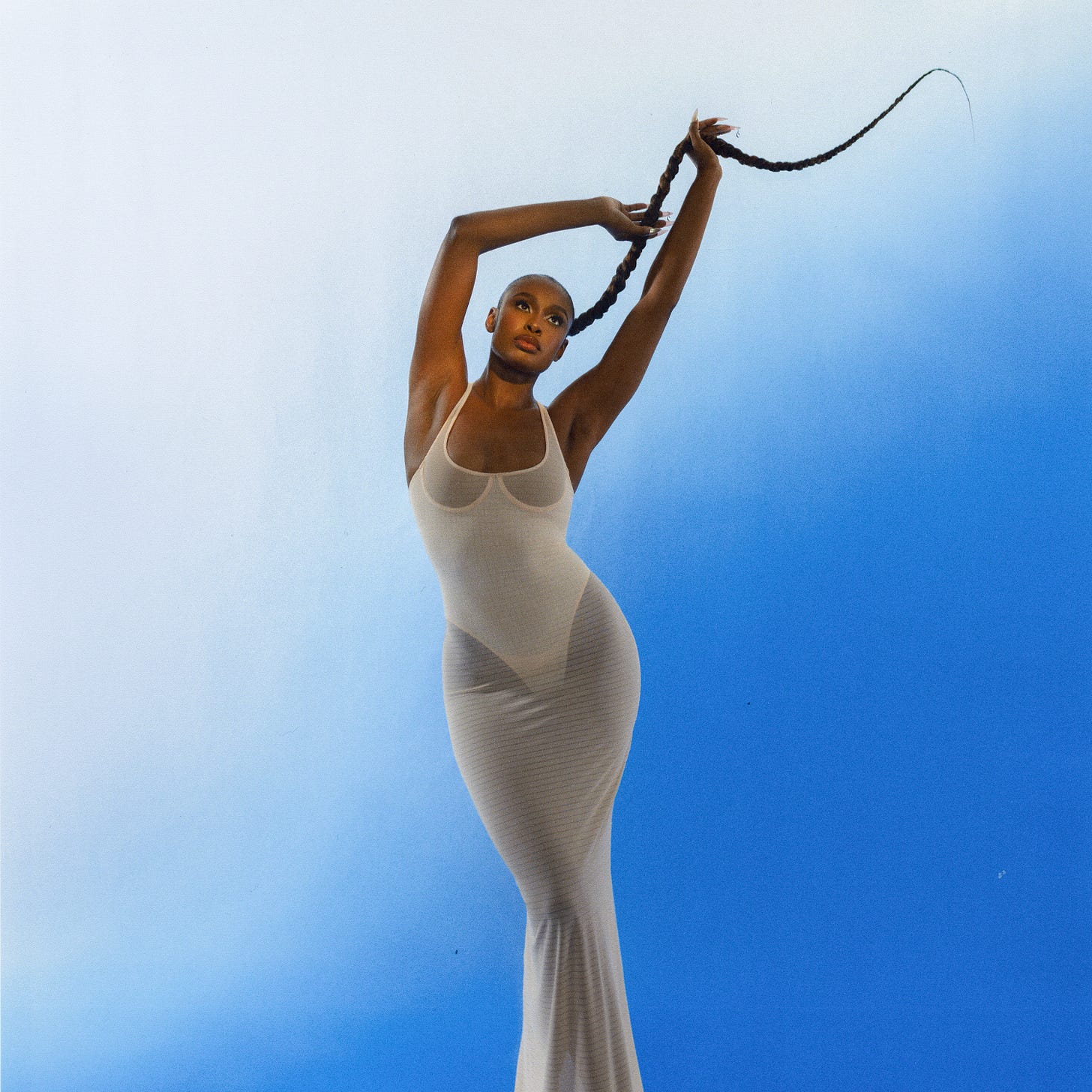April 2025 Roundups: The Best Albums of the Month
With releases from Bon Iver to Jane Remover, here are notable releases in April that stood out to us as the best albums of the month.
Music in 2025 carried an unexpected undertow. While the year’s output was lackluster, we returned to albums that softened the edges—works marked by their calming presence, tinged with sadness, and lifted by delicate touches (see: Mereba, The War and Treaty, Brother Ali, Saba & No ID, etc). With April coming to a close, these weren’t the only sounds that stuck. A few high-octane records broke through the stillness, their brashness a jolt to the system, and dance music held its pull, though the favorites sidestepped the popular picks for tracks that pulsed with quiet depth. What ties this together isn’t a claim to objectivity—it’s just one listener’s take, filtered through decades of living and hearing as music fans. The point? We want to pass along a few finds that might hit you fresh and true. But before we start, let’s give our EP shoutouts.
Joe Kay, If Not Now, Then When (EP)
Soulection co‑founder Joe Kay built his global brand by curating other people’s tracks; here, he finally curates himself. The six‑song EP flips the collective’s signature future‑soul palette into autobiographical mood‑pieces that dart from dubwise low end to airy Rhodes chords. Kay describes the project as “a postcard from the process of learning to show up for myself,” and he literalizes that mantra by stacking communal vocals—Amaria, Arin Ray, Sinéad Harnett—around his own understated talk‑sing delivery. “Laguna Loop” welds pattering Afro‑beat percussion to cracked‑open diary entries about friendship fatigue, while “Venice Midnight” rides gospel organ until it dissolves into hiss like a cassette left on the dashboard. The sequencing feels radio‑show intentional—each track segues with vinyl‑crackle bumpers—and by the time the closer drifts out on wind‑chime synths you’ve absorbed a sonic philosophy: curiosity over perfection. Worth a listen for production heads who enjoy hearing the DJ move from selector to subject. — Brandon O’Sullivan
Melanie Fiona, Say Yes (EP)
Melanie Fiona’s first multi‑song release in more than a decade doubles as a soft reboot for the once‑major‑label singer who spent years recovering from vocal cord trauma. In recent interviews, she frames Say Yes as “a permission slip to reclaim joy” while steering her own indie imprint, LoveLinc Music. The suite opens with the gospel‑leaning title track, anchored by plush Rhodes chords and a call‑and‑response hook that invites literal audience participation. From there, she toggles between buttery mid‑tempos (“Make Me Feel” featuring Vallejo rapper‑poet LaRussell) and a sumptuous closing jam that sneaks in bass licks from Thundercat and drum programming from Andre “Dre” Harris—effectively stitching her ‘00s neo‑soul heyday to the present. The EP’s real power, though, lies in Fiona’s willingness to narrate survival: she threads verses about postpartum anxiety and industry disillusionment through melodies that refuse to mope, giving the record an affirming pulse reminiscent of The MF Life but lighter on its feet. It’s an easy front‑to‑back spin that reminds you vocal texture can carry autobiography. — Jamila W.
GIGI, Waves of It (EP)
Detroit‑born newcomer GiGi (not to be confused with the NYC indie rocker Gigi Perez) parcels five songs into a 15‑minute mood‑board that toggles between airy R&B and gauzy bedroom‑pop. This project centers on the ebb‑and‑flow metaphor of its title: love rushes in, retreats, and rushes back stronger. “Tidal Wave” rides brushed snares and humid Rhodes to document that breath‑catch moment when you realize a crush has depth; “Reacquainted” flips nylon‑string guitar and chopped vocal clips into a lo‑fi confessional about rekindling trust. GiGi’s vocal phrasing nods to early Brandy—velvet glide with hiccuped runs—while her lyric sheet leans diaristic: lines about voicemail drafts, chipped nail polish, and secondhand novels. Early blog buzz applauds the EP’s intimate production and emotional clarity, predicting a breakout among fans who gravitate toward Alex Isley or Joyce Wrice. — Brandon O’Sullivan
ROSEYE, Ways of Speaking (EP)
ROSEYE floats across five tracks of satin synth pads, finger-snap percussion, and sax lines courtesy of Candy Dulfer that ripple like heat mirages. “Ayesha” opens with layered vocal stacks that swell into a mid-tempo stepper, while “Deep Dive” invites its lover into aquatic metaphors over sub-bass pulses that bloom like underwater thunder. Throughout, lead vocalist Tallulah Rose slips between English and wordless melisma, turning every hook into an exercise in emotional code-switching. Ways of Speaking balances sensuality with self-interrogation. “Y.A.M.U” reframes vulnerability as power, chanting “You are my undoing/You will be my ruin” until surrender sounds victorious. Subtle polyrhythms draw on broken-beat and Afro-Latin grooves, but the mixes stay air-light, letting Rose’s phrasing ride just ahead of the pocket. In barely twenty minutes, the group sketches a world where intimacy becomes its own language, a reminder that sometimes the most radical statement is speaking softly yet clearly about desire. — Harry Brown
Alex Isley, When (EP)
Issued on Free Lunch/Warner, When marks Isley’s major-label bow and her most tactile songwriting yet. “Mic On” and “Ms. Goody Two Shoes” showcase two poles: one a KAYTRANADA-assisted dance cut flirting with melodic rap; the other a Camper-produced slow jam that sways through vapor-soul filters. The EP opens with “Holding On,” where feather-soft falsetto grapples with future uncertainty, and closes on “Thank You for a Lovely Time,” an after-the-storm lament underscored by brushed kalimba and upright bass. Across seven songs, Isley interrogates timing—when to risk love, when to let go, when to declare self-sovereignty—wrapping each inquiry in gauzy harmonies that evoke her parents’ Isley lineage without leaning on nostalgia. — Tai Lawson
Now, let’s get into the albums.
SAULT, 10
SAULT quietly releases banger after banger, and 10 extends the collective’s numerological breadcrumb trail while pivoting from the widescreen orchestration of Acts of Faith toward something intimate and sun-dappled. The ten-song suite (its tracks titled only in initials) binds gospel harmony, Laurel-Canyon folk chords, and feather-light Afro-beat percussion into hymns about rebuilding spiritual muscle after grief. Cleo Sol’s voice floats over brushed drums and rubbery P-bass supplied by Pino Palladino, while Michael Kiwanuka and Dave Okumu slip in ghost-guitar lines that keep the record moving like a procession rather than a set list. Recorded largely live to tape, the music never bubbles past a low simmer, yet subtle modulations—hand-clap breaks, wordless choir swells, a stray synth-brass stab—keep forward motion constant. The band’s trademark opacity remains, but the metadata confirms the April date and the reappearance of SAULT’s core ensemble, solidifying 10 as another piece in the group’s ongoing gospel-soul continuum. — Phil
Bootsy Collins, Album of the Year #1 Funkateer
Bootsy’s latest carnival opens with a thunderclap of clavinet, talk-box chatter, and a bass line dirtier than a P-Funk tour bus floor. One moment he’s dropping a tight “on-the-one” homage in “The JB’s Tribute Pastor P,” weaving Clyde Stubblefield’s drum DNA around rapid-fire rhyme cameos; the next he’s leaping into “Bubble Pop,” a synth-doused slice of space-disco where his slap bass ricochets off laser-beam guitar licks. Even the zaniest detours—metallic shred workouts, cartoon skits about AI gone rogue—are glued together by that rubbery low-end tone that could only come from the star-shaped Space Bass. Yet beneath the jokes and psychedelic FX is a living history lesson. Bootsy threads gospel shout-outs, G-funk hand-offs, and sly Afro-beat nods into a single revue, treating funk less as a genre and more as an eternal renewable resource. Guest spots are deployed like fireworks, but Collins remains ringmaster, his bass anchoring each side quest while his falsetto ad-libs remind you fun is sacred business. In doing so, he reasserts why his fingerprint has never faded from modern groove music. — Harry Brown
Ann Nesby, ANNiversary
After more than ten years without a full-length studio release, Ann Nesby—her voice a cornerstone of soul music’s rich history—presents ANNiversary, her eighth album. From her days with Sounds of Blackness to this latest chapter, Nesby shapes grown-folk R&B into a medium that examines love, self-worth, and emotional accountability with unflinching honesty. The album’s ten tracks unfold as a study in human connection, with “Missing You” capturing the ache of absence, “Who” turning inward to question identity, and “My Man,” featuring writing credits from RL Huggar, asserting a confident claim to devotion. Brian “B-Flat” Cook, her longtime production collaborator, builds a musical foundation that amplifies Nesby’s vocal strength, blending classic soul textures with a contemporary edge. ANNiversary reaffirms Nesby’s status as a GRAMMY-winning artist whose authenticity continues to define the genre’s evolution. — Brandon O’Sullivan
Galactic & Irma Thomas, Audience With the Queen
Irma Thomas proves her voice remains a commanding force at 83 on Audience With the Queen. Her career, launched with a hit in 1959, has made her one of the city’s most iconic figures, a GRAMMY-winning artist whose influence stretches across decades and genres. On this album, Thomas channels that strength into a range of expressions—love ballads, political declarations, and songs that lift the spirit with purpose. Take “How Glad I Am,” a cover of Nancy Wilson’s 1964 classic. She infuses it with a gospel depth that nods to her church roots, turning a familiar tune into something distinctly her own. Then there’s “Over You,” a pulsing track where Thomas wrestles with the aftermath of a failed romance, her vocals cutting through Galactic’s tight, funky arrangement. Galactic, a mainstay in New Orleans for 30 years, brings their signature mix of blues, jazz, and that unmistakable local funk, providing a modern foundation that complements Thomas’s classic soul sound. This album arrives at a moment when the music world often mourns greats after they’re gone. Instead, Audience With the Queen demands recognition for Thomas now, a living legend whose work continues to shape the Crescent City’s musical identity. Her collaboration with Galactic underscores the importance of honoring artists in their time, ensuring their contributions resonate while they can still hear the applause. — Imani Raven
Lou Phelps, Chèlbè
With Chèlbè, Lou Phelps embraces his multilingual roots, delivering verses in English, French, and Haitian Creole. This trilingual blend reflects his Haitian-Canadian heritage, creating a sound that feels both personal and globally resonant. For example, “After I” highlights this fusion, where Phelps easily shifts between languages, crafting a cosmopolitan identity that distinguishes him in today’s hip-hop scene. His brother KAYTRANADA, an award-winning producer, shapes the album’s 11 tracks with beats that balance smoothness and energy, providing a steady pulse beneath Phelps' confident flow. From the momentum of singles, including “I Dunno” and “Is My Mic On?,” Chèlbè builds a relentlessly groovy atmosphere. Classic rap elements merge with understated R&B tones, offering a fresh yet rooted experience that keeps heads nodding from beginning to end. — Phil
Ledisi, The Crown
Ledisi just gets it. Spanning 40 crisp minutes, the 11-track cycle works like a soul-philosophy class: each lesson interlaces New Orleans brass flourishes, Bay Area funk bass, and choir-loft call-and-response to examine self-worth. Two pre-release singles frame the arc: “Love You Too,” a mid-tempo groove anchored by rising church-organ swells, outlines unconditional devotion, while “BLKWMN” deploys marching-band snares and Hammond stabs to crown Black womanhood as the album’s sovereign theme. The production team, mostly long-time collaborator Rex Rideout, with guests like Camper, keeps arrangements uncluttered so Ledisi’s elastic melisma can leap from jazz scatting to gospel belt. Her twelfth studio LP underscores her shift from love-song specialist to elder raconteur, addressing faith, politics, and ancestral pride in a single breath. — Imani Raven
Sumac & Moor Mother, The Film
Conceived as an “imaginary documentary” score, this 50-minute behemoth fuses Sumac’s free-form post-metal with Moor Mother’s oracular spoken-word. Recorded live in single takes, movements flow like reel changes: “Scene 2: The Run” lurches from hi-hat shrapnel into sludge-bass avalanches, while opener “Camera” finds Moor Mother chanting “I want my breath back” against detuned drones, a visceral nod to present-day suffocation—literal and political. The closer, a 16-minute tidal wave of feedback and free-jazz cymbal wash, leaves her whispering “memories from planet Earth,” as if panning over post-apocalyptic credits. Rather than riff-plus-vocal stacking, the collaboration melts both vocabularies into what reviewers are calling free-metal: structure-less yet composed, spiritual yet furious. — Nehemiah
Fly Anakin, (The) Forever Dream
Executive producer Quelle Chris weaves a quilt of dusty soul chops, mutant boom-bap, and left-field jazz loops, then lets Fly Anakin loose to test new cadences. On “Say Thank You,” his flow spills over bar lines like melted vinyl, while Pink Siifu’s cameo pushes the beat into psychedelic drift. Interludes crackle with phone-line distortion and dream-journal murmurs, framing the album as a lucid-sleep mixtape about liberation: spiritual, creative, and geographic. The guest roster reads like an underground rap census—Denmark Vessey, bbymutha, The Alchemist—but Anakin’s presence ties everything together. His verses toggle from local Richmond slang to cosmic observation, suggesting the “forever dream” is both hood ambition and metaphysical blueprint. By closing on a two-minute organ hymn, he leaves lingering resonance: even amid technical flexing, the record’s heartbeat is wonder. — Harry Brown
Oscar Jerome, The Fork
Drawing from a crossroads metaphor, Oscar Jerome’s The Fork captures a decisive moment shaped by his time in Egypt and the voices of new companions. The album’s title, lifted from the phrase “a fork in the road,” signals choices with weighty outcomes, a theme Jerome threads through every track. His indie jazz foundation—polyrhythmic drums, mellow guitar, and vocals that shift between soulful crooning and rapid-fire rapping—returns here, but with a measured hand. This restraint keeps the music approachable, never obscuring the message beneath. On “Borrowed Other,” the Zimbabwean/Polish poetry duo M.A MOYO layers verses that echo Jerome’s global influences, their words merging seamlessly with his jazz grooves. Hak Baker, a London rapper, brings a stark, urban bite to “Worth Nothing,” cutting through the album’s smoother edges with precision. French-Senegalese singer-songwriter anaiis lends “Smell the Daisies” a delicate, almost otherworldly calm, her voice floating above the instrumentation. These additions, though varied, cohere under Jerome’s production—his first solo venture behind the boards. — Imani Raven
Blu & August Fanon, Forty
Producer August Fanon gifts Blu a kaleidoscope of soul fragments, detuned Rhodes chords, dusty swing drums, woozy flute runs, and Blu answers with verses that treat aging like an open-mic testimony: honest, cracked, unafraid to laugh at itself. The sequencing is clever: “Forty” sets the tone with jubilant horn stabs, then a relay of underground luminaries (Mickey Factz, Charles Hamilton, R.A.P. Ferreira) file in, each handed a beat that skitters between boom-bap minimalism and kaleidoscopic jazz loops. Every hook reconfigures the LP’s central mantra—worth is measured in wisdom, not timeline metrics. Mid-album, “Love (1-4)” runs nearly eight minutes, fluttering through four pocket-grooves while female vocalists stack harmonies like 1970s Roy Ayers sessions; by contrast, “Bible” cuts to a two-minute sermon over funereal organ. The quick pivots mirror turning pages of a photo album: snapshots of fatherhood, youthful missteps, spiritual doubt. Blu never hides the scuffs in his flow, but Fanon’s crate-digger textures wrap each confession in warmth, making the record feel less like nostalgia and more like a living scrapbook still being written. — Harry Brown
Vinnie Paz, God Sent Vengeance
Across snarling strings, pipe-organ stabs, and kick drums that hit like spiked maces, Vinnie Paz closes his “God” trilogy with apocalyptic swagger. The opening salvo flips Middle-Eastern scales into militant march tempos, framing Paz’s gravel-throated meditations on faith, retribution, and survival. Guests from Onyx to Cappadonna add steel but never upstage the host; each cameo is a new blade in his theological armory. The MC stays equal parts street reporter and eschatological preacher, quoting sacred texts in one bar, referencing mutant kaiju in the next. Yet, the rhyme schemes are meticulous, threading multisyllabic patterns through shifting BPMs. The final tracks slow the tempo to cinematic doom: choirs hover, snares decay, and Paz’s voice lands like final judgment, ending a three-record arc in which personal trauma and global dread have become indistinguishable battlegrounds. — Brandon O’Sullivan
Ray Vaughn, The Good, The Bad & The Dollar Menu
Top Dawg Entertainment’s Long Beach wildcard turns the fast-food metaphor into autobiography—a mixtape-length origin story. Built on crate-dust loops and sparse West-Coast bass, the tape hops from hunger-pangs one-liners (“make ’em McDouble back”) to reflections on policing, rivalries, and surviving price-tag rap economics. Pre-release teaser “Dollar Menu,” served with a low-budget video shot at his childhood burger spot, set the tone: irreverent, punchline-heavy, but soaked in the anxiety of making it out of Poly High only to find the industry just another drive-thru window. A day-of-release sit-down for MTV’s Fresh Out confirmed Vaughn recorded most vocals in a single week, chasing the spontaneous energy of his viral “Lay Wit Ya” freestyle rather than over-polishing. The project marks his formal introduction before a TDE full-length, positioning him as both the label’s jester and its hungry conscience. — Nehemiah
Fatboi Sharif & Driveby, Let Me Out
Driveby’s production sounds like VHS horror scored on malfunctioning SP-404s: warped choir samples spiral backward, 8-bit synths detune in real time, and drums land off-grid like falling ceilings. Over this haunted funhouse, Fatboi Sharif raps in poltergeist cadences, stretching syllables until they splinter (“Battlestar Galactica”), then whispering conspiracies that dissolve into screams. Beans, Curly Castro, and others cameo, but the core mood is claustrophobic delirium, as if the mic sits inside Sharif’s dream journal. For all its gore-splattered imagery, “Zeitgeistic Psychosomatic Measurements” references body horror and art-world cults, the album doubles as social critique. Sharif stitches American demons (mass incarceration, surveillance) into Lovecraftian metaphors, demanding listeners decode the terror rather than merely consume it; it’s a 30-minute plunge where horrorcore theatrics and avant-rap experimentation fuse into a kind of sonic séance: unsettling, magnetic, and impossible to file under safe genre tags. — Phil
Destin Conrad, Love On Digital
Released in the same week of Friday the 25th, Love On Digital finds Tampa-born crooner Destin Conrad mining Y2K chat-room nostalgia—AIM pings, flip-phone chirps, Neptunes-esque synth-plucks—for a 18-track study of queer romance mediated through screens. Opener “Kissing in Public” melts two-step drums into Rhodes pads, reclaiming PDA for Black queer visibility, while serpentwithfeet trades airy falsetto runs with Conrad on “Soft Side,” turning vulnerability into a duet. Production is helmed by Above Ground’s in-house trio, who layer dial-up-tone glitches under bedroom-soul chords, giving the album its VHS-warble patina. Cameos from Kehlani (“Bad Bitches”) and Teezo Touchdown (“The Last Time”) lend star wattage, yet Conrad’s feather-light tenor remains central, often dry-mixed to evoke voice-note intimacy. He frames the record in interviews as therapy for imposter syndrome; the finished product feels more like a Tumblr love letter rendered in hi-fidelity. — Jamila W.
Silas Short, Lushland
Four years after arriving in L.A. with a car full of demo reels, Chicago-raised multi-instrumentalist Silas Short debuts on Stones Throw with a 12-song love letter to mid-‘90s neo-soul. Tracked mostly at the label’s Highland Park studio, Lushland blends nylon-string guitar, MPC-programmed drums, and Fender Rhodes into pocket-sized grooves—each mixed to feel like late-afternoon sunlight on cassette hiss. The singles trace Short’s journey: “L-Train,” written on a Red Line commute, captures city-watching wonder; “Guy,” later remixed by Karriem Riggins, flips unrequited lust into falsetto-stacked doo-wop. Gospel roots surface in stacked choir refrains, a nod to jam sessions with his father in Milwaukee church basements. The record’s handmade warmth, right down to Short’s hand-painting the vinyl center labels, places him in Stones Throw’s lineage of analog auteurs carving soul from humble tools. — Harry Brown
Gerald Clayton, Ones & Twos
On Ones & Twos, Gerald Clayton channels a crew of improvisers into a unified force. Joel Ross’s vibraphone dances across the tracks, casting a luminous glow that reflects jazz’s golden age. Elena Pinderhughes shapes her flute lines with a voice-like quality, shifting between melancholy and uplift. Marquis Hill’s trumpet carves out bold, reflective arcs, while Kendrick Scott’s drums lock in a steady yet free rhythm. Ever the anchor, Clayton threads his piano through compositions blending modal jazz, soul, modern classical, and Afro-Latin flavors. After the studio captured their initial interplay, Kassa Overall stepped in, remixing the tracks with a producer’s ear, adding beats that pulse beneath the surface. The result shines in moments like “Sacrifice Culture,” where the ensemble’s chemistry feels alive, or “Endless Tubes,” a track that hums with collective energy. Split into sides A and B, the album mirrors a DJ’s craft, with titles like “Angels Speak” and “Lovingly” trading phrases across the divide. Ones & Twos thrives on this interplay, a record where every player’s contribution fuels a broader, breathing whole. — LeMarcus
Jane Remover, Revengeseekerz
Jane Remover’s new record showcases her ability to blend tightly controlled sounds with unexpected bursts of chaos. Metallic percussion slices through the mix, its industrial edge a stark foil to warmer tones, while synthesized distortions twist the audio terrain, each effect locked in with surgical precision to heighten the tension. “Fadeoutz” wields razor-sharp guitar lines that surge with purpose, paired with samples from her past catalog—echoes that tie her current sound to earlier days. In “Angels in Camo,” guitar work threads through the arrangement, knotting together with sampled nods to her roots, forming a bridge between who she was and who she’s become. These tracks stretch out, their extended runtimes fueled by vocal shifts—soft, inward moments giving way to bold, outward declarations that hold attention. Familiar motifs from her older material surface throughout, a quiet gift to longtime followers, yet the production keeps every layer clear and separate, only to snap them into a unified whole. This balance mirrors her broader shift: the lo-fi haze of her early home recordings has sharpened into a sound built for bigger rooms. Once hesitant to step beyond private spaces, Jane now leans into the charge of live crowds, a confidence that seeps into the album’s fearless choices. — Oliver I. Martin
Bon Iver, SABLE, fABLE
What started as Justin Vernon’s lone voice has swelled into a many-handed collective, and SABLE, fABLE reflects this shift with a sound enriched by diverse collaborators like Jim-E Stack, Danielle Haim, Dijon, and Jenn Wasner. The album begins with three acoustic tracks—reprised from the SABLE, EP—that nod to the stark intimacy of For Emma, Forever Ago, tempered by the maturity of 17 years lived. Then comes the pivot: “Everything Is Peaceful Love,” a fifth-track jolt of funky, soulful pop that swaps Bon Iver’s old sadness for rhythm and light, blending sophisti-pop’s polish with alt-R&B’s edge. This nostalgic and fresh mix highlights the collective’s range, moving from quiet beginnings to a fuller, more accessible sound. Without the haze of 22, A Million, or the layered metaphors of past releases, SABLE, fABLE distills Bon Iver’s history into something clear and cohesive, a fitting marker of where the project stands today. — Charlotte Rochel
Adrian Younge, Something About April III
Younge caps his psychedelic-soul trilogy by unleashing an analog fantasia: 30-piece strings swoop across break-beats, Moog bass burbles beneath Brazilian vocal chorales, and vibraphone phrases echo old giallo soundtracks. Every note was tracked to tape, then mixed through vintage outboard gear, so the album crackles with valve warmth even when break-beats get chopped into stutter-step funk. Conceptually, the record charts time travel, lifting cinematic soul tropes of the past to imagine future sample gold. Younge frames the project as the culmination of a 15-year search for a “lost LP he always wanted to find in the crates.” Strings quote Morricone, Rhodes chords nod to David Axelrod, but samba percussion pushes the palette into another hemisphere, reminding listeners that soul’s diaspora is global. The closing suite marries minor-key harp to distorted hip-hop drums, suggesting even nostalgia can’t escape forward motion. — Imani Raven
duendita, A Strong Desire to Survive
Queens vocalist-producer duendita distills trauma, healing and righteous anger into a ten-song set. Field-recorded subway rumbles and detuned upright-piano chords underpin opener “Why I Didn’t Report,” where her caramel alto floats above clipped news-broadcast samples to confront assault silence culture. Throughout, she toggles between choral stack-ups worthy of Renaissance polyphony and skeletal piano ballads like “Baby Teeth,” recorded in her bedroom with a single Zoom mic. She self-produces most tracks, but MIKE slips in lo-fi drum palettes on “HTP,” echoing their New York DIY lineage. The album’s sequencing feels nonlinear—short interludes bleed into full-length songs, mirroring the circular nature of recovery. By the closing voicemail collage “All Mine — June 11, 2019,” she reframes survival not as a destination but perpetual motion, each track a checkpoint in reclaiming bodily autonomy. — Jamila W.
Tunde Adebimpe, Thee Black Boltz
Adebimpe opens with “Magnetic,” a jittery cocktail of kraut-rock drums and rubber-band synth lines, then refuses to stick to any lane for the next ten cuts. One song erupts into synth-punk sprints, the next skanks on off-beat reggae guitar, and midway through, he drops a beat-boxed gospel refrain that could pass for a street-corner tape loop. The production, co-piloted by Wilder Zoby and Guillermo Brown, keeps vocals front-and-center, letting Adebimpe’s elastic tenor vault from falsetto yelps to hushed spoken-word laments. Grief underpins the record; several tracks address the passing of his sister, but the mood never wallows. “ILY” frames loss in a folk lullaby that blossoms into synth-choir uplift, while “Streetlight Nuevo” rides a twitchy funk groove toward a defiant sunrise. Thematically, the album feels like gathering broken mirror shards: each fragment reflects anxiety, joy, or righteous anger, and together they refract a messy hope that refuses to dim—even when the political sky looks pitch black. — Tai Lawson
Denzel Himself, Violator
Denzel Himself’s first full-length feels like being dragged through a neon-lit Western run by punks and prophets. Self-produced from top to bottom, the record welds gnarled break-beats and distorted bass to flashes of choral synths, then sprays the mix with guitar shrapnel that nods to industrial and shoegaze. Tracks such as “Goth Los Angeles” and “Kowgirl Manifesto” swing between whispered spiritual confessions and barked threats, the MC bending his voice from sullen croon to throat-ripped howl while live drums pummel like a hardcore set crashing an art-rap gig. All the twitchy micro-edits and sudden tape-stop drops serve a bigger picture: a synaesthetic swirl that mirrors the artist’s own description of experiencing “Dilla’s brain in Manson’s skull.” Beneath the shock value sits an unabashed love letter to music itself. Multiple interludes stitch diary-level monologues to vapor-trail vocal harmonies, casting the LP as a healing ritual: he calls it “my love letter to music” in the liners, where vengeance fantasies and tenderness trade verses. By the finale, Denzel’s “Goth Cowgirl” alter ego stands triumphant, riding a blur of punk thrash and rap cadences that reset the possibilities for DIY British hip-hop. — Brandon O’Sullivan
Emma-Jean Thackray, Weirdo
Thackray’s second full-length channels grief, neurodivergence and P-Funk devotion into a kaleidoscopic self-portrait. Credited on 123 roles, from trumpet to art direction, she wields maximalist jazz orchestration one moment and grunge-distorted guitars the next. “Wanna Die” stages multiple Thackrays in a mock late-‘90s TV skit, masking lyrics about suicidal ideation beneath slapstick. Deeper cuts like “Black Hole” merge Clinton-style clavinet squelch with Leeds brass-band refrains, affirming her mantra of dancing through despair. Written after the sudden 2023 death of her long-term partner, the album documents a crawl from Zelda-induced stasis back to music-driven purpose, closing with the gospel-soul lift of “Thank You for the Day.” It’s less a genre piece than a survival diary sung in cosmic-jazz dialect. — Nehemiah
Rhiannon Giddens & Justin Robinson, What Did the Blackbird Say to the Crow
Giddens and Robinson tune their banjos outdoors, let the birds sing back, and cut the takes in one breath. Fiddle drones and claw-hammer rolls circle each other until they mimic rural North Carolina’s heartbeat; you can hear cicadas and porch boards creak because the duo literally recorded on ancestral homesteads, folding the land’s ambience into the mix. Their selection of 18 traditional pieces, many passed down by mentors Joe Thompson and Etta Baker, refuses museum glass: tempos swing, harmonies bend, and Robinson’s fiddle occasionally screeches like a field holler caught in the wind. Instead of modernizing the repertoire, they animate it. Call-and-response shouts crack open ballads, while Giddens’ low register turns “Marching Jaybird” into lullaby and dirge. The pair’s interplay blurs storyteller and historian; each bow scrape underscores how Black string-band tradition remains a living technology of joy and resistance. By capturing porch air and memory in the same signal path, they craft a record that feels less like a time capsule and more like reclaimed kinship made audible. — Imani Raven
Coco Jones, Why Not More?
Almost three years after “ICU” made her the new voice of R&B yearning, Coco Jones answers her own question—why not reach further?—with a 14-song debut. Writing every lyric herself, she toggles between airy head-voice confessionals and Trap&B bounce, often in the same song. StarGate, Aaron Shadrow, and Jasper Harris flourishes underpin “Taste,” which flips a sly “Toxic” interpolation into a flirtation anthem, while Cardiak and Wu10 recreates the Lenny Williams classic on “Here We Go (Uh Oh),” now her first Adult R&B Airplay No. 1. Ballads like “Other Side of Love” show a studio strategy Jones describes as “patience sessions,” letting melodies breathe rather than chasing radio-ready hooks. The result is a debut whose emotional center is “By Myself,” an R&B power-waltz that affirms therapy, solitude, and self-trust—future tour fodder as she balances music with her role on the final season of Bel-Air. — Tai Lawson




